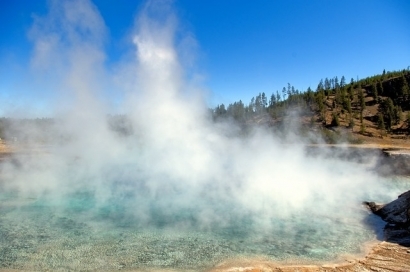
The legislation authorizes DOE to support four competitively selected pilot projects that demonstrate EGS in different types of geology. The demonstration projects will provide valuable information about EGS in the field and help spur further growth of geothermal energy—which has the potential to be a critical source of abundant, always-available zero-carbon energy and an opportunity for fossil communities to maintain economic stability by transitioning to producing clean energy. These demonstration projects could help advance DOE’s goals to deploy more than 60 GW of geothermal electricity-generating capacity by 2050—resulting in clean, reliable power for 129 million American homes and businesses, and contributing to President Biden’s goals for a net-zero emissions economy.
“The U.S. has incredible, untapped geothermal potential beneath our very feet, which can be harnessed to meet our energy demands with a round-the-clock, clean renewable resource available across the country,” said U.S. Secretary of Energy Jennifer M. Granholm.
“Investments within President Biden’s Bipartisan Infrastructure Law are allowing us to incentivize access to that resource nationwide, while helping fossil communities and workers leverage existing infrastructure and skills to seamlessly transition to producing clean energy.”
EGS projects can significantly increase geothermal energy deployment throughout the United States in both the electric and non-electric sectors. Substantial and sustained investment, including in technology development and demonstrations, is vital to ensure that the country can utilize the untapped potential of EGS. electricity-generating capacity alone by 2050. That’s the equivalent of approximately 8% of projected U.S. electricity-generating capacity.
Accessing geothermal resources for energy production requires fluid to flow through openings in rocks, thus facilitating recovery of heat energy that is usually produced through hot water or steam. EGS projects use manmade reservoirs to enable heat recovery for energy generation in areas where geothermal resources exist but cannot be accessed using conventional methods.
The RFI solicits feedback from industry, academia, research laboratories, government agencies, and other stakeholders on demonstration project attributes and outcomes that will most likely lead to successful EGS deployment in the future. DOE is also seeking suggestions for the possible structure of the demonstration projects, including how DOE’s investments can be most impactful in promoting workforce development, and environmental and energy justice through the EGS Pilot Demonstrations Program.
The announcement is a Request for Information and not a Funding Opportunity Announcement. No applications are being accepted at this time. Responses to the RFI must be submitted via email to BIL_EGSPilotDemos@ee.doe.gov by 5 p.m. ET on May 13, 2022. View the RFI in EERE Exchange for more information.

